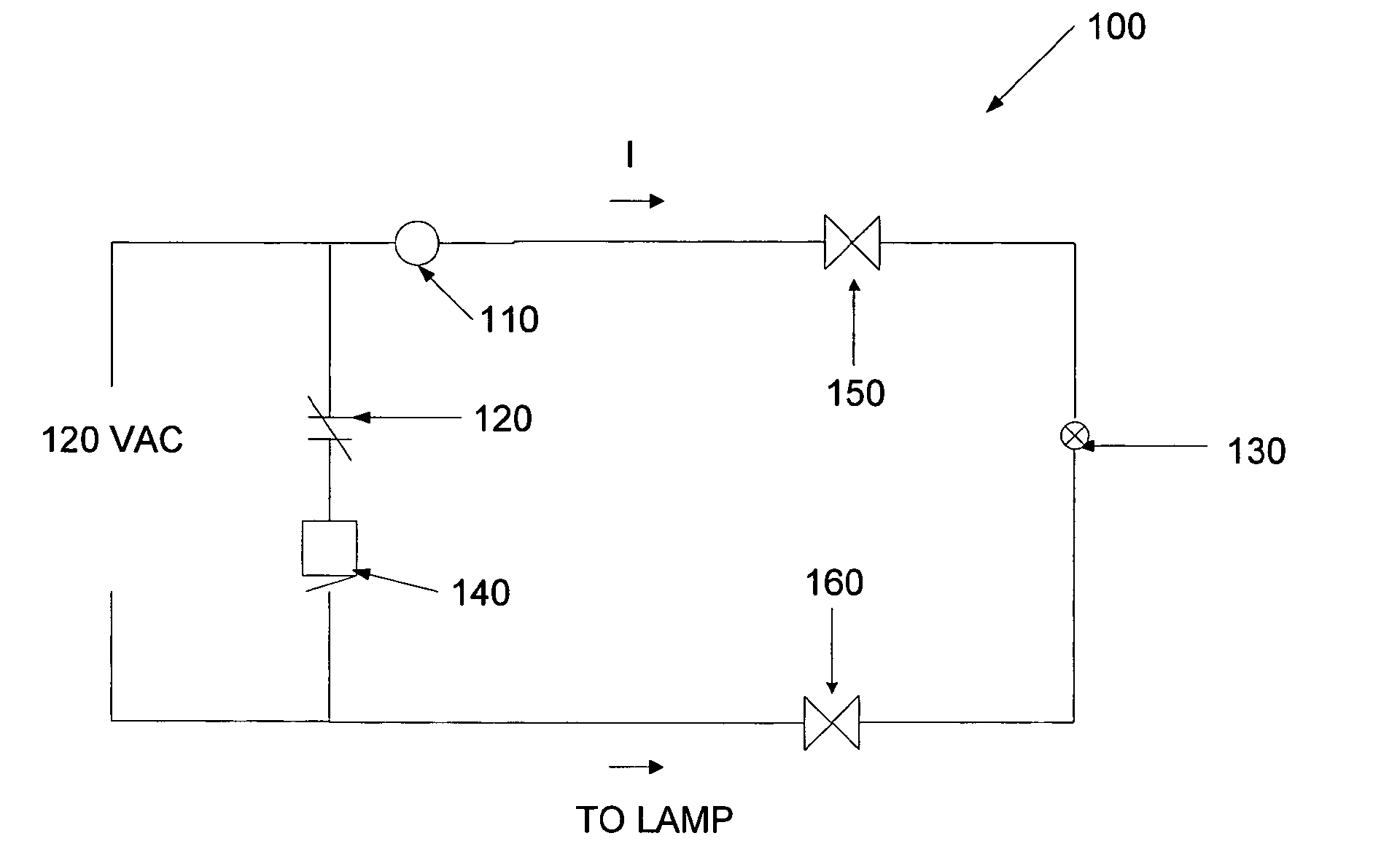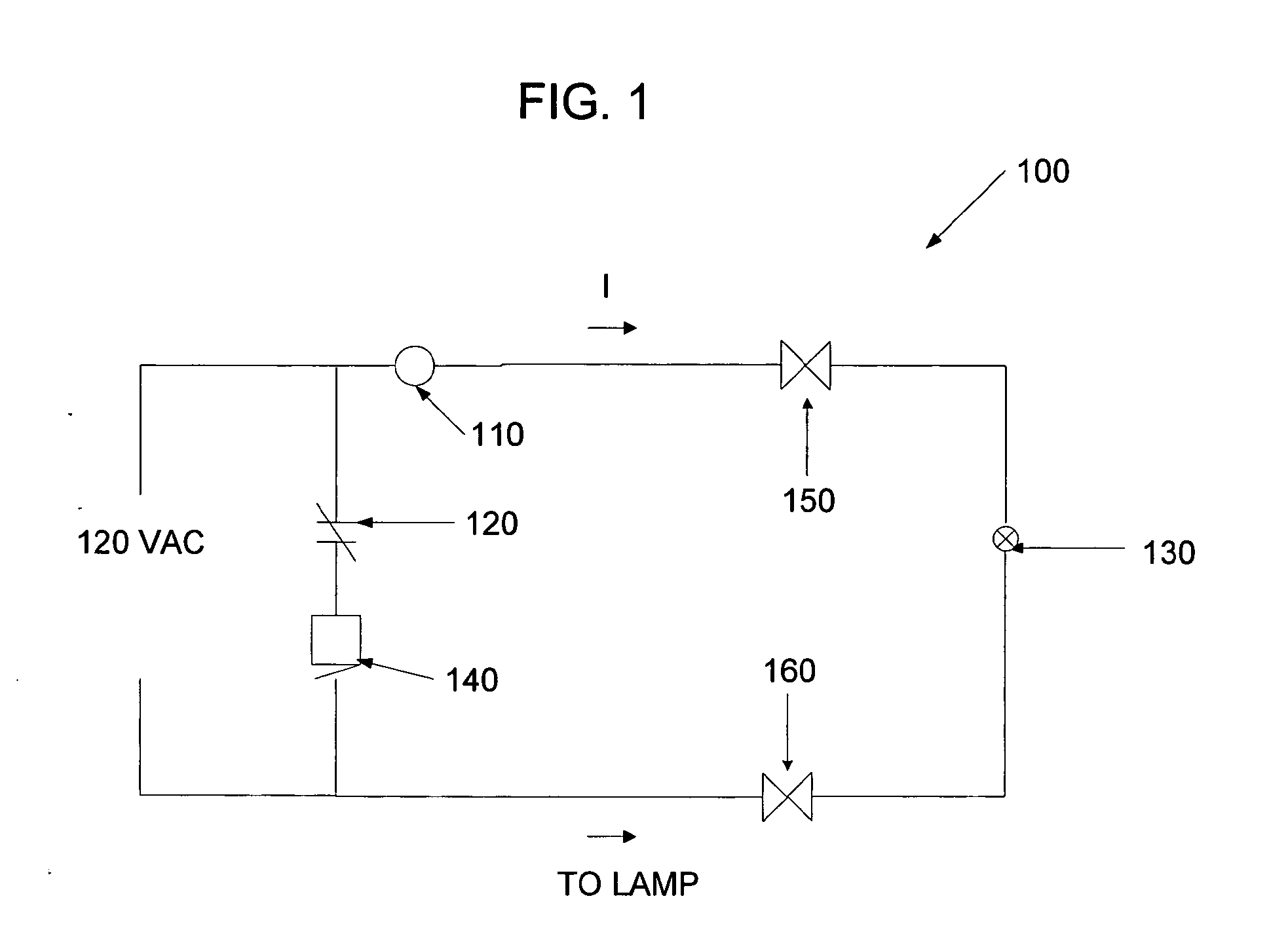Lamp or LED failure monitoring system
a failure monitoring and led technology, applied in the direction of lamps testing, light sources, instruments, etc., can solve the problems of lamp failure, panel to sound the alarm, and considerable primary curren
- Summary
- Abstract
- Description
- Claims
- Application Information
AI Technical Summary
Problems solved by technology
Method used
Image
Examples
Embodiment Construction
[0018] The present invention relates to a mechanism for monitoring LEDs or low voltage incandescent lamps using existing alarm panels. With reference to FIG. 3, an exemplary embodiment of an electrical circuit 300 in accordance with the present invention is illustrated. As shown in FIG. 3, electrical circuit 300 comprises, for purposes of illustration, two circuits identified in FIG. 3 as circuit 1 and circuit 2. In FIG. 3, electrical circuit 300 is connected to an alarm panel, such as that shown in FIGS. 1 or 2, in lieu of lamp 130 or lamp 210, respectively, and a voltage is thereby applied from the alarm panel. As will be described in detail below, circuit 1 begins at the connections to one of the above-described alarm panels and ends at the primary winding P1 of transformer 380 and circuit 2 begins at the secondary winding P2 of transformer 380 and includes a light sensing device. In FIG. 3, the dashed lines indicate that lamp 310 rather than LEDs 320 may be connected to electric...
PUM
 Login to View More
Login to View More Abstract
Description
Claims
Application Information
 Login to View More
Login to View More - R&D
- Intellectual Property
- Life Sciences
- Materials
- Tech Scout
- Unparalleled Data Quality
- Higher Quality Content
- 60% Fewer Hallucinations
Browse by: Latest US Patents, China's latest patents, Technical Efficacy Thesaurus, Application Domain, Technology Topic, Popular Technical Reports.
© 2025 PatSnap. All rights reserved.Legal|Privacy policy|Modern Slavery Act Transparency Statement|Sitemap|About US| Contact US: help@patsnap.com



